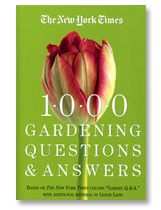Food and Flowers

Home grown asparagus can vary quite a bit in thickness, especially as the patch ages. Our patch (the source of these representative stalks) is 19 years old and about due for renewal.
Asparagus is not the first vegetable of spring. Dandelions are the first vegetable of spring (and ramps come next). But asparagus is in a class apart.
Read More…

Old Faithful: forsythia is the easiest spring bloomer to force – if you don’t count pussy willow -but it’s just at the head of the parade
My friend Ilana the chicken lady has been busy tidying outdoors. “I have forsythia, Viburnum carlesii, flowering quince and Kerria japonica cuttings from spring cleanup,” she wrote. “ Will only the forsythia bloom? What about gooseberry and mock orange?
Read More…

Carouby de Maussane snow pea; the shoots and flowers are (almost) as delicious as the peas
This morning was loud with geese, still symbolic even though they don’t migrate much any more. Everyone is either wearing something green or else proudly pointing out they’re NOT wearing something green. It isn’t time for us to plant peas quite yet – spring and St. Patrick notwithstanding – but those in slightly warmer climes are clearly already at it. The post with directions for building a simple pea trellis is close to the top of the frequent hit list.

The original Sugarsnaps aren’t just the best tasting snap pea; they’re also very heavy-bearing.
Read More…
Winter is orange city around here. Quantities of peel get candied. The zest adds flavor to stews, enhances the stuffing of roast fowl, perfumes custards and cheesecakes and lends its zing to pastries from pound cake to gingerbread. Result: the fridge is frequently full of naked oranges needing to be used up.

Orange and Avocado salad, one way to use up the oranges.
Read More…
Last Saturday winter began in earnest: steel gray sky, cotton candy snow: very beautiful, very cold,
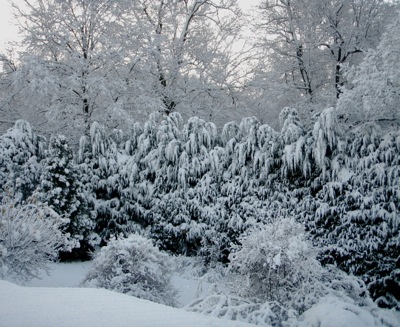
Then, after the mail came, very much time to be thinking about next year’s tomatoes.
Seed catalogs don’t wait for Christmas any more; they’ve been coming in for about a month. Now the pace is picking up and after last summer’s disastrous late blight, I’m looking through their offerings in a whole new way, because

In the summer of ’09, purely by accident, we had hybrid beefsteaks in the greenhouse.
They were the only tomatoes we got and although they weren’t as good as our favorite heirlooms they were better than anything we could buy locally, heirloom or hybrid.
Read More…
December 1st, 6:00 PM: The candied grapefruit rind is bubbling in the syrup, almost done, so I’m sort of stuck in the kitchen when I notice it’s cold outside in the clear still night under the fat moon. So of course I get nervous about the lettuce and my pet baby radicchios.
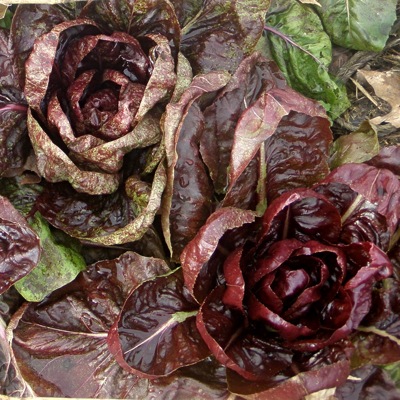
The radicchios are still making progress toward heading up; I continue to have hope
Decide to put covers back on even though plants are already at that frozen stage where you shouldn’t touch them if you want them to thaw unharmed. Wilted tips better than wilted everything being my thinking on that.
Turn off the grapefruit (recipe follows)
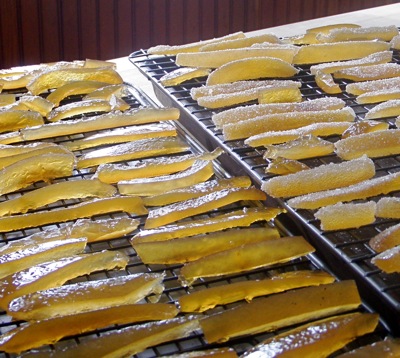
Home candied citrus rind is worlds better than store-bought. Also extremely easy to make and very nearly free.
Put on the headlamp, recruit Bill, who puts on his headlamp, and down we go to cover most but not all of what’s left.
Read More…
One lettuce, actually, the delicious heirloom butterhead ‘Merveille des Quatre Saisons’.

lettuce 'Merveille des Quatre Saisons," popular since the 1880's
Where winter temperatures drop into the teens and below, it’s only merveille in 3 saisons, but that’s still pretty good. It’s one of the first to head up after a spring planting. It stays nicely flavorful in summer, even after it starts to bolt, and it’s really stellar in fall: tender, juicy, sweet, beautiful – and disinclined to rot, even when the autumn is unusually rainy.
Read More…
It’s a ‘Chicago Hardy’, reputedly among the toughest, this year’s shot at zone denial. The goal is to have it live outdoors all winter, without dying down to the roots.
But our part of the Hudson Valley is still zone 5b, though teetering on the edge of 6, and figs are not hardy north of zone 7. So what makes me think we can pull this off? Pure hubris? My usual oversupply of sunny optimism ? Too much research into fig protection during the Times Q&A days?
Some of each, I have no doubt. But the main reason to give it a try is this house’s uniquely suitable spot, a double protected corner facing southwest.

The fig in late September, slightly taller than 5 feet, planted as close as possible to a very cosy corner.
If you count the fact that the house ( circa 1870) is not exactly a model of tightness, the protection is triple. But double is the important part; the corner has extra backup because the house sides don’t meet.
Read More…
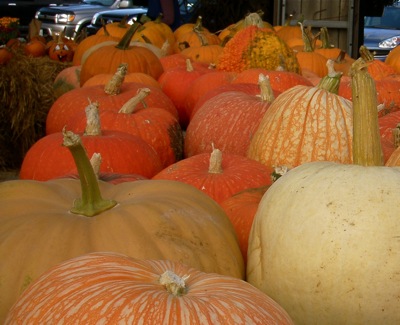
To avoid the same old same old, stock up on winter squash while you can still buy it from a farmer.
(* Thanksgiving note: If you got here looking for pumpkin pie, rather than the other way ’round, there is now a detailed recipe.)
As a general rule, there’s no need to issue the annual squash warning until shortly before Thanksgiving. But tomatoes aren’t the only fruits that suffer when it’s cold and wet for weeks on end in June and July. This year has been very hard on a lot of squash growers in the Northeast and mid-Atlantic.
So I figure I ought to mention it now: If you want to eat good winter squash all winter and don’t want to die of boredom, this is the time to start cruising the farmstands looking for interesting squash and stocking up on an assortment, bearing in mind that “winter squash” is really 3 different vegetables – Cucurbita pepo, C. maxima and C. moschata – each with a different season of glory.
Read More…
I was all set to go on about how this is primo planting time and then discuss a few must-haves. But then I woke up: discussing Fall Planting is like discussing Volunteers, a book, not a post. Last time I tried, “volunteers” became ” shirley poppies” with everything else on the in-a-minute list.
A minute having gone by, this will be about Italian parsley, a must-have volunteer.
But first the annual reminder: time to get those bulb orders in! And that includes the garlic, if you want to try something new from the dozens of types available.
As usual, garlic is the least of it. We’ll mostly be planting tulips and alliums, including more of

tulip 'Mount Tacoma,' not generally sold in stores
for the white garden in Maine.
For New York, there’s yet more crocus, both species and giant Dutch, and of course a few more lilies – primarily trumpets.

this one is 'Golden Splendor,' rock-solid reliable
and Japanese lilies (L. speciosum) the last lilies to bloom.

Lily Speciosum rubrum. Bill just brought these up from New York; the ones in the Maine garden are fewer and later.
Mercifully, it’s not time yet to plant or move peonies (although it is time to clean them up), and …what was I just saying about too much?
Onward to the parsley! Can’t have too much of that.

Self-sown Italian parsley; the full carpet is roughly 12 square feet
Read More…



















